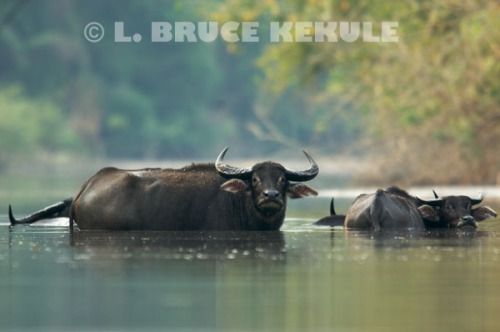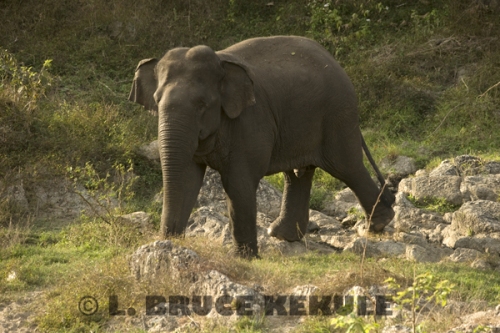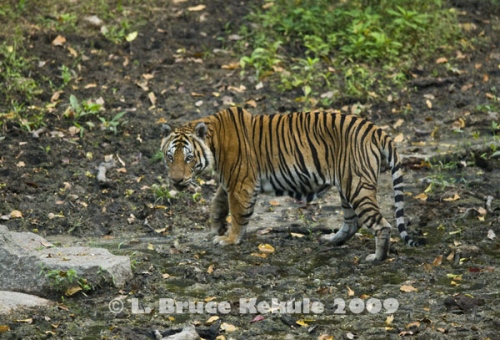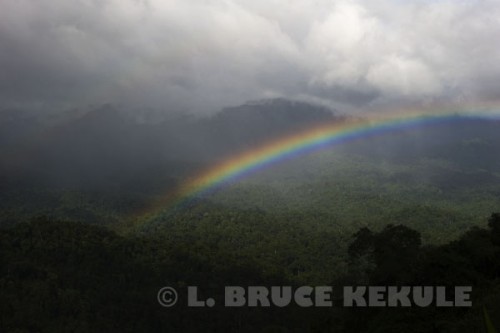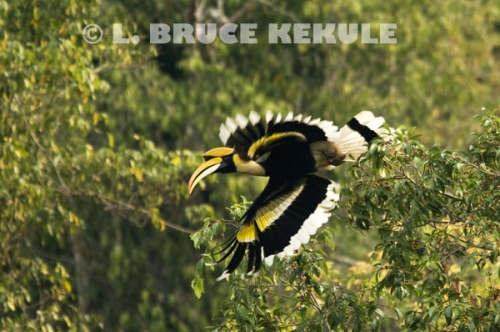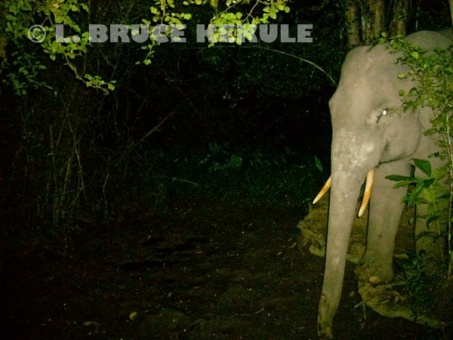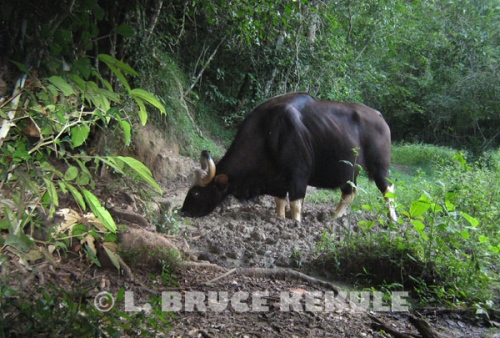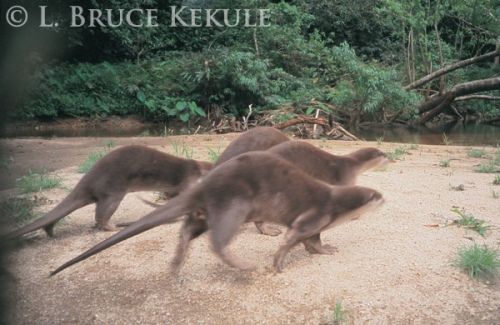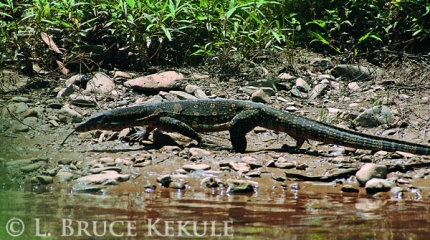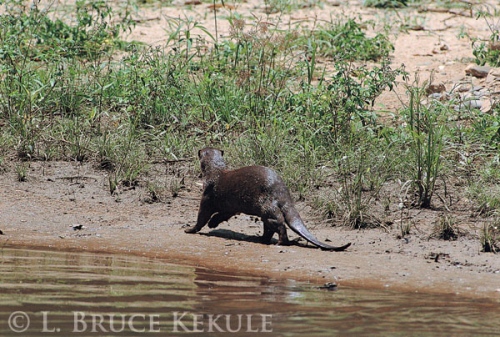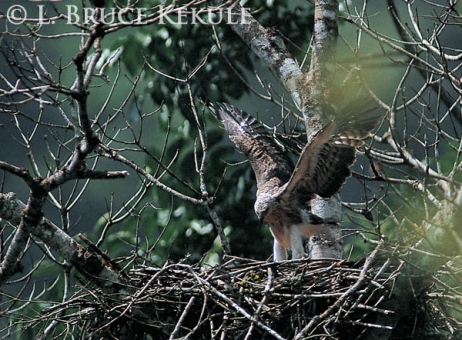Posts Tagged ‘western’
Kaeng Krachan: Jewel in the Tenasserim Range
One of the Kingdom’s Last Great Tiger Reserves: Thailand’s Largest National Park and Biodiversity Hotspot
Just a short forty years ago, a local Karen hunter sitting alone in a tree-stand made of bamboo waits by the headwaters of the Phetchaburi River. He has trekked south from his humble abode for about a week. This young man is a traditional hunter and knows how to subsist by himself in this forbidding forest. His father before him also hunted this place and taught him all the tricks-of-the-trade: hunting for a living and surviving in the wild.
Rainbow over the Phetchaburi River
Darkness envelopes the man as the sun sets behind him. The moon and stars are brilliant and night visibility is good. The location is a mineral deposit (salt lick) deep in the interior close to the river. This site attracts gaur, banteng, elephant, and the extremely rare Sumatran rhino, plus sambar, muntjac and wild pigs. Tigers and leopards also came looking for prey. It was a magnificent animal kingdom.
Serow camera trapped on old logging road
His primary target was the rhino but would take anything that came to the natural seep for the life-giving minerals. The hunter sets in for the night knowing the large mammals sometimes prefer to visit in darkness. He is armed with a crude self-made muzzle-loading rifle. It is the dry season, and he is not too worried about a misfire. The caliber is as large as his thumb, and the round heavy lead ball and black powder charge is enough to take down an elephant.
A great hornbill lifting off a fruit tree
At last, a dark shape emerges from the forest and slowly ambles straight to the seep. Head down, the odd-toed ungulate drinks to quench its thirst. The hunter switches on his flashlight and temporarily blinds the two-horned rhinoceros. He takes aim and fires his weapon with a resounding boom and tremendous muzzle flash that breaks the still night. The creature is hit in the shoulder and runs for a short distance before collapsing. It is a long wait but dawn eventually comes and the hunter climbs down from the platform to investigate his trophy. Sadly, he just killed one of the last few Sumatran rhinos left in this forest.
Indochinese tiger caught by camera trap by the Phetchaburi River
Shortly hereafter, he dispatched another rhino and then never saw the species again. He sold the horns, which were small, for about 100 U.S. dollars to a waiting middleman: a pathetic return compared to what the horns probably fetched on the black market which was most likely in the thousands of dollars. This voracious wildlife trade has absolutely wiped out many species from the forests throughout the Kingdom. It has been devastating and unfortunately, still carries on to this day.
Indochinese tiger camera trapped at a mineral lick
When Kaeng Krachan was declared a national park in 1981, the hunter, his family and several other families in the little village were relocated more than twenty kilometers outside the boundaries of the protected area. A plot of land was given to them but it was not to much, probably just sustainable. He was told that he could not hunt anymore and had to eke out a living by farming. It was a difficult road ahead for them after living in the forests since they were born. Relocation was tough but they adapted and survived. The hunter and his family now plant pineapples and other crops. He stopped hunting, and his two sons actually care about conserving the forest and wildlife.
Bull elephant camera trapped at a mineral deposit
The Phetchaburi is one of Thailand’s most famous waterways. King Rama V visited this waterway and His Majesty had water sent to his palace in Bangkok for drinking purposes. The King was also presented with rare white elephants found here. During his reign, both Sumatran and Javan rhinos existed in the interior in good numbers.
Tiger camera trapped by the Phetchaburi River
In 1914-1915, an Englishman named K.G. Gairdner made many forays into the Phetchaburi watershed recording the wildlife. He published several papers in the Natural History Society of Siam about his exploits and encounters in this wilderness. Large herds of elephants and gaur were present and many tigers thrived due to the prolific amount of prey species.
Tiger camera trapped by the Phetchaburi River
The Phetchaburi River flows from the Tenasserim Range through Kaeng Krachan, the Kingdom’s largest national park encompassing 2,915 square kilometers (1,125 square miles). It is still pristine within some areas of the park. Montane forest is found on the highest peaks with predominantly dry evergreen forest interspersed with mixed deciduous vegetation. Even though both species of rhino have disappeared, the park continues to showcase a great diversity of wildlife.
Gaur camera trapped at a mineral lick
Rare and endangered animals still survive such as the Siamese crocodile and stumped-tailed macaque as well as elephant, gaur, tiger, leopard, Asian wild dog, tapir, sun bear and Asiatic black bear. Other mammals such as sambar, and the rare Fea’s muntjac plus common muntjac and wild pig keep the balance of nature intact by providing ample prey for the carnivores. Banteng were common in the mixed deciduous lowlands but humans encroaching on the forest soon eliminated most of these wild cattle and there are very few remaining if any at all.
Gaur herd spooked by camera trap
However, the Phetchaburi is still an important watershed and is the main source of water for people on the lowlands. Hornbills and gibbons are plentiful. I once listened to four separate gibbon groups calling at the same time from Phanern Thung Mountain. The surrounding forest contains fertile food in abundance and safe habitats for all the wild animals. Both Sundaic and Indo-Chinese species survive here.
Gaur cow camera trapped at a mineral deposit
The Phetchaburi is one of the Kingdom’s least disturbed waterways and although the lower section is dammed, the upper reaches of the river are still fairly intact. More than 400 bird species have been recorded in Kaeng Krachan and thousands of unusual plant and insect species can be found. There are more than 70 species of fish in the waterway. Many reptiles including the king cobra and reticulated python, and amphibians like the giant tree frog are here. There are probably some species new to science still to be discovered, specially insects and plants.
Additional animals found in Kaeng Krachan National Park:
Siamese crocodile in the Phetchaburi River
Lone Siamese croc in the river
Smooth-coated otters camera-trapped by the Phetcahburi River
Water monitor hunting for prey by the Phetchaburi River
Smooth-coated otter hunting by the Phetchaburi River
Smooth-coated otter jumping into the Phetchaburi River
Lesser fish-eagle by the Phetchaburi River
Lesser fish-eagle chick in a nest above the Phetcahburi River
Crocodile pond in the Phetchaburi River


